Opinion & Analysis
The 4 majors: Equal pillars in golf’s grand cathedral
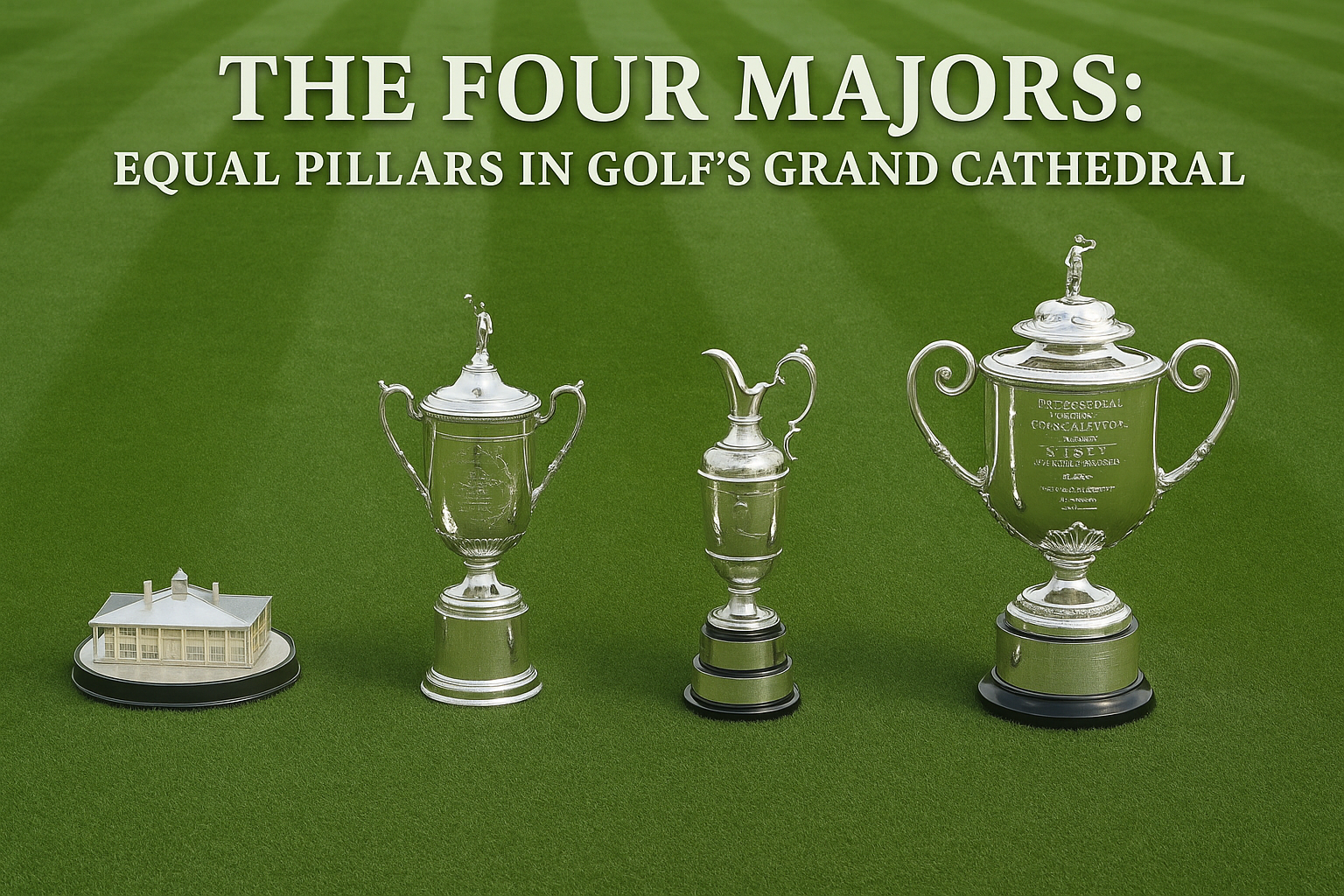
There’s a conversation that seems to resurface every May, right after the PGA Championship concludes. I heard it again this year, and frankly, it made my blood boil. “The PGA is the lesser major,” they said, dismissing it with the casual indifference of someone who hasn’t truly grasped what these championships represent. After 45 years of loving this game and serving as a PGA Professional, I feel compelled to address this misguided notion head-on.
Do I have a favorite major? Yes, indeed — the Masters captivates me like no other tournament. The anticipation I feel each April is unmatched. But my personal preference doesn’t diminish my admiration or respect for the other three championships. Appreciating one doesn’t require devaluing another.
Let me be crystal clear: There is no “lesser” major in golf. Each of the four stands as an equal pillar supporting the grand cathedral of our sport’s history. To suggest otherwise isn’t just wrong—it’s a fundamental misunderstanding of golf’s rich tapestry.
Augusta’s Springtime Splendor
The Masters, with its azaleas and green jackets, opens our major season each April. Augusta National presents a unique challenge with its undulating greens and strategic demands. The tournament’s traditions—from the Champions Dinner to the Par 3 Contest—create an atmosphere unlike any other. But does its beauty and exclusivity make it more important than the others? Absolutely not. It’s simply one magnificent chapter in our annual story.
The Ultimate Examination
June brings the U.S. Open, golf’s ultimate examination. The USGA’s commitment to testing every aspect of a player’s game through narrow fairways, punishing rough, and treacherous greens has created some of the most dramatic moments in golf history. From Hogan’s 1-iron at Merion to Tiger’s triumph on a broken leg at Torrey Pines, the U.S. Open has consistently demanded greatness. Its difficulty doesn’t make it superior—just distinctly challenging in its own right.
Golf’s Ancient Testament
The Open Championship (or British Open to some) carries the weight of being golf’s oldest major, dating back to 1860. Playing links golf in unpredictable weather along Scotland and England’s rugged coastlines connects modern players to the sport’s origins. The challenge of controlling ball flight in howling winds while navigating pot bunkers and undulating fairways creates a test unlike anything else in major championship golf. Its age and tradition are remarkable, but they don’t elevate it above its counterparts.
The People’s Championship
And then there’s the PGA Championship—the tournament that sparked this reflection. As the championship of the PGA of America, it represents the 30,000-plus professionals who serve as the game’s frontline ambassadors. These are the men and women who teach, grow, and nurture the game at courses across America. The tournament’s history of producing dramatic finishes and surprising champions speaks to its quality and importance. From John Daly’s improbable win in 1991 to Phil Mickelson becoming the oldest major champion in 2021, the PGA consistently delivers compelling golf.
Four Distinct Tests, Equal in Stature
What truly distinguishes each major isn’t some arbitrary hierarchy of importance, but rather their unique characteristics. The Masters is played on the same course annually, creating a familiar stage where history accumulates layer by layer. The U.S. Open travels to America’s greatest courses, testing players with conditions that border on the extreme. The Open Championship connects us to golf’s roots through links courses shaped by nature rather than bulldozers. The PGA Championship showcases the best players while honoring those who teach and grow the game.
The Grand Seasonal Narrative
Together, these four tournaments create a perfect seasonal narrative. They test different skills, reward different strengths, and collectively identify the most complete players in the world. The career Grand Slam remains golf’s most elusive achievement precisely because mastering all four majors requires extraordinary versatility.
Four Cornerstones, One Cathedral
When I hear someone diminish any major, particularly “my” PGA Championship, I don’t just hear an opinion—I hear a misunderstanding of what makes golf special. Each major carries its own history, its own challenges, and its own place in our sport’s pantheon. The Masters isn’t more important than the Open; the U.S. Open isn’t superior to the PGA.
They are four equal cornerstones supporting the magnificent structure of championship golf. Each deserves our respect, our attention, and our appreciation for what it contributes to the game we love. The next time you hear someone rank the majors, remind them that in golf’s grand cathedral, there are no lesser pillars—only different ones, each essential to the whole.
PGA Professional Brendon Elliott is an award-winning coach and golf writer. You can check out his writing work and learn more about him by visiting BEAGOLFER.golf and OneMoreRollGolf.com. Each Monday, check out his regular column “The Starter” on RG.org.
Editor’s note: “My Take” is an ongoing series where Brendon shares his thoughts and opinions on various aspects of the game and industry. These are Brendon’s opinions and do not necessarily reflect those of GolfWRX, its staff, and its affiliates.
Opinion & Analysis
The 2 primary challenges golf equipment companies face

As the editor-in-chief of this website and an observer of the GolfWRX forums and other online golf equipment discourse for over a decade, I’m pretty well attuned to the grunts and grumbles of a significant portion of the golf equipment purchasing spectrum. And before you accuse me of lording above all in some digital ivory tower, I’d like to offer that I worked at golf courses (public and private) for years prior to picking up my pen, so I’m well-versed in the non-degenerate golf equipment consumers out there. I touched (green)grass (retail)!
Complaints about the ills of and related to the OEMs usually follow some version of: Product cycles are too short for real innovation, tour equipment isn’t the same as retail (which is largely not true, by the way), too much is invested in marketing and not enough in R&D, top staffer X hasn’t even put the new driver in play, so it’s obviously not superior to the previous generation, prices are too high, and on and on.
Without digging into the merits of any of these claims, which I believe are mostly red herrings, I’d like to bring into view of our rangefinder what I believe to be the two primary difficulties golf equipment companies face.
One: As Terry Koehler, back when he was the CEO of Ben Hogan, told me at the time of the Ft Worth irons launch, if you can’t regularly hit the golf ball in a coin-sized area in the middle of the face, there’s not a ton that iron technology can do for you. Now, this is less true now with respect to irons than when he said it, and is less and less true by degrees as the clubs get larger (utilities, fairways, hybrids, drivers), but there remains a great deal of golf equipment truth in that statement. Think about it — which is to say, in TL;DR fashion, get lessons from a qualified instructor who will teach you about the fundamentals of repeatable impact and how the golf swing works, not just offer band-aid fixes. If you can’t repeatably deliver the golf club to the golf ball in something resembling the manner it was designed for, how can you expect to be getting the most out of the club — put another way, the maximum value from your investment?
Similarly, game improvement equipment can only improve your game if you game it. In other words, get fit for the clubs you ought to be playing rather than filling the bag with the ones you wish you could hit or used to be able to hit. Of course, don’t do this if you don’t care about performance and just want to hit a forged blade while playing off an 18 handicap. That’s absolutely fine. There were plenty of members in clubs back in the day playing Hogan Apex or Mizuno MP-32 irons who had no business doing so from a ballstriking standpoint, but they enjoyed their look, feel, and complementary qualities to their Gatsby hats and cashmere sweaters. Do what brings you a measure of joy in this maddening game.
Now, the second issue. This is not a plea for non-conforming equipment; rather, it is a statement of fact. USGA/R&A limits on every facet of golf equipment are detrimental to golf equipment manufacturers. Sure, you know this, but do you think about it as it applies to almost every element of equipment? A 500cc driver would be inherently more forgiving than a 460cc, as one with a COR measurement in excess of 0.83. 50-inch shafts. Box grooves. And on and on.
Would fewer regulations be objectively bad for the game? Would this erode its soul? Fortunately, that’s beside the point of this exercise, which is merely to point out the facts. The fact, in this case, is that equipment restrictions and regulations are the slaughterbench of an abundance of innovation in the golf equipment space. Is this for the best? Well, now I’ve asked the question twice and might as well give a partial response, I guess my answer to that would be, “It depends on what type of golf you’re playing and who you’re playing it with.”
For my part, I don’t mind embarrassing myself with vintage blades and persimmons chasing after the quasi-spiritual elevation of a well-struck shot, but that’s just me. Plenty of folks don’t give a damn if their grooves are conforming. Plenty of folks think the folks in Liberty Corner ought to add a prison to the museum for such offences. And those are just a few of the considerations for the amateur game — which doesn’t get inside the gallery ropes of the pro game…
Different strokes in the game of golf, in my humble opinion.
Anyway, I believe equipment company engineers are genuinely trying to build better equipment year over year. The marketing departments are trying to find ways to make this equipment appeal to the broadest segment of the golf market possible. All of this against (1) the backdrop of — at least for now — firm product cycles. And golfers who, with their ~15 average handicap (men), for the most part, are not striping the golf ball like Tiger in his prime and seem to have less and less time year over year to practice and improve. (2) Regulations that massively restrict what they’re able to do…
That’s the landscape as I see it and the real headwinds for golf equipment companies. No doubt, there’s more I haven’t considered, but I think the previous is a better — and better faith — point of departure when formulating any serious commentary on the golf equipment world than some of the more cynical and conspiratorial takes I hear.
Agree? Disagree? Think I’m worthy of an Adam Hadwin-esque security guard tackle? Let me know in the comments.
@golfoncbs The infamous Adam Hadwin tackle ? #golf #fyp #canada #pgatour #adamhadwin ? Ghibli-style nostalgic waltz – MaSssuguMusic
Podcasts
Fore Love of Golf: Introducing a new club concept

Episode #16 brings us Cliff McKinney. Cliff is the founder of Old Charlie Golf Club, a new club, and concept, to be built in the Florida panhandle. The model is quite interesting and aims to make great, private golf more affordable. We hope you enjoy the show!
Opinion & Analysis
On Scottie Scheffler wondering ‘What’s the point of winning?’

Last week, I came across a reel from BBC Sport on Instagram featuring Scottie Scheffler speaking to the media ahead of The Open at Royal Portrush. In it, he shared that he often wonders what the point is of wanting to win tournaments so badly — especially when he knows, deep down, that it doesn’t lead to a truly fulfilling life.
View this post on Instagram
“Is it great to be able to win tournaments and to accomplish the things I have in the game of golf? Yeah, it brings tears to my eyes just to think about it because I’ve literally worked my entire life to be good at this sport,” Scheffler said. “To have that kind of sense of accomplishment, I think, is a pretty cool feeling. To get to live out your dreams is very special, but at the end of the day, I’m not out here to inspire the next generation of golfers. I’m not out here to inspire someone to be the best player in the world, because what’s the point?”
Ironically — or perhaps perfectly — he went on to win the claret jug.
That question — what’s the point of winning? — cuts straight to the heart of the human journey.
As someone who’s spent over two decades in the trenches of professional golf, and in deep study of the mental, emotional, and spiritual dimensions of the game, I see Scottie’s inner conflict as a sign of soul evolution in motion.
I came to golf late. I wasn’t a junior standout or college All-American. At 27, I left a steady corporate job to see if I could be on the PGA Tour starting as a 14-handicap, average-length hitter. Over the years, my journey has been defined less by trophies and more by the relentless effort to navigate the deeply inequitable and gated system of professional golf — an effort that ultimately turned inward and helped me evolve as both a golfer and a person.
One perspective that helped me make sense of this inner dissonance around competition and our culture’s tendency to overvalue winning is the idea of soul evolution.
The University of Virginia’s Division of Perceptual Studies has done extensive research on reincarnation, and Netflix’s Surviving Death (Episode 6) explores the topic, too. Whether you take it literally or metaphorically, the idea that we’re on a long arc of growth — from beginner to sage elder — offers a profound perspective.
If you accept the premise literally, then terms like “young soul” and “old soul” start to hold meaning. However, even if we set the word “soul” aside, it’s easy to see that different levels of life experience produce different worldviews.
Newer souls — or people in earlier stages of their development — may be curious and kind but still lack discernment or depth. There is a naivety, and they don’t yet question as deeply, tending to see things in black and white, partly because certainty feels safer than confronting the unknown.
As we gain more experience, we begin to experiment. We test limits. We chase extreme external goals — sometimes at the expense of health, relationships, or inner peace — still operating from hunger, ambition, and the fragility of the ego.
It’s a necessary stage, but often a turbulent and unfulfilling one.
David Duval fell off the map after reaching World No. 1. Bubba Watson had his own “Is this it?” moment with his caddie, Ted Scott, after winning the Masters.
In Aaron Rodgers: Enigma, reflecting on his 2011 Super Bowl win, Rodgers said:
“Now I’ve accomplished the only thing that I really, really wanted to do in my life. Now what? I was like, ‘Did I aim at the wrong thing? Did I spend too much time thinking about stuff that ultimately doesn’t give you true happiness?’”
Jim Carrey once said, “I think everybody should get rich and famous and do everything they ever dreamed of so they can see that it’s not the answer.”
Eventually, though, something shifts.
We begin to see in shades of gray. Winning, dominating, accumulating—these pursuits lose their shine. The rewards feel more fleeting. Living in a constant state of fight-or-flight makes us feel alive, yes, but not happy and joyful.
Compassion begins to replace ambition. Love, presence, and gratitude become more fulfilling than status, profits, or trophies. We crave balance over burnout. Collaboration over competition. Meaning over metrics.
Interestingly, if we zoom out, we can apply this same model to nations and cultures. Countries, like people, have a collective “soul stage” made up of the individuals within them.
Take the United States, for example. I’d place it as a mid-level soul: highly competitive and deeply driven, but still learning emotional maturity. Still uncomfortable with nuance. Still believing that more is always better. Despite its global wins, the U.S. currently ranks just 23rd in happiness (as of 2025). You might liken it to a gifted teenager—bold, eager, and ambitious, but angsty and still figuring out how to live well and in balance. As much as a parent wants to protect their child, sometimes the child has to make their own mistakes to truly grow.
So when Scottie Scheffler wonders what the point of winning is, I don’t see someone losing strength.
I see someone evolving.
He’s beginning to look beyond the leaderboard. Beyond metrics of success that carry a lower vibration. And yet, in a poetic twist, Scheffler did go on to win The Open. But that only reinforces the point: even at the pinnacle, the question remains. And if more of us in the golf and sports world — and in U.S. culture at large — started asking similar questions, we might discover that the more meaningful trophy isn’t about accumulating or beating others at all costs.
It’s about awakening and evolving to something more than winning could ever promise.




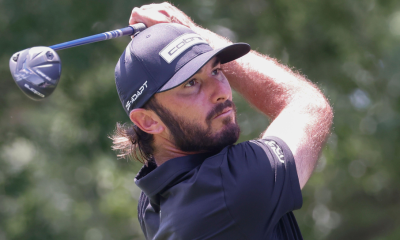



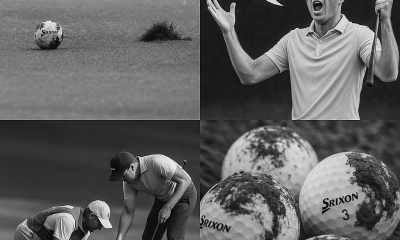

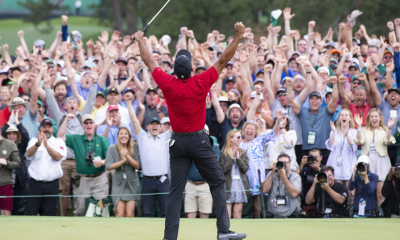

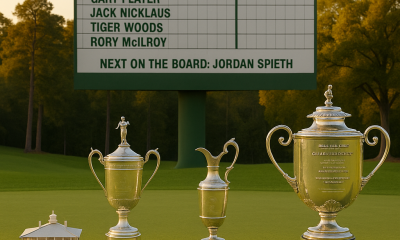









Duane
May 27, 2025 at 11:06 am
I agree that the majors are the foundation of the game. I think the “lesser major” may come from the different strength of the fields. The U.S. Open and Open Championship have the strongest fields followed by the PGA. Realistically the club pros in the PGA field have no chance of winning which lessens the strength of field. The Masters has by far the weakest field along with the smallest. The older former champions and amateurs again have no realistic chance of competing.